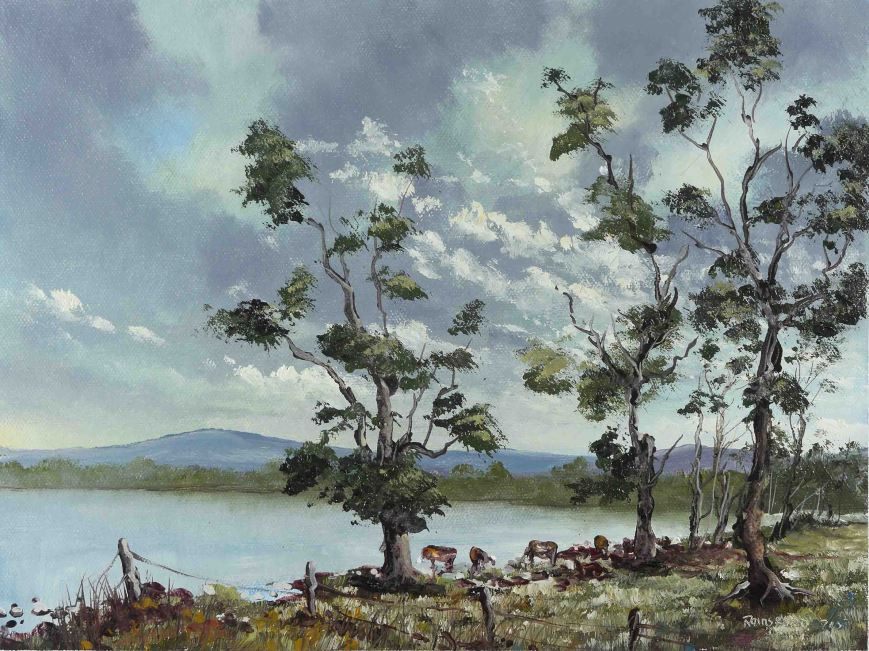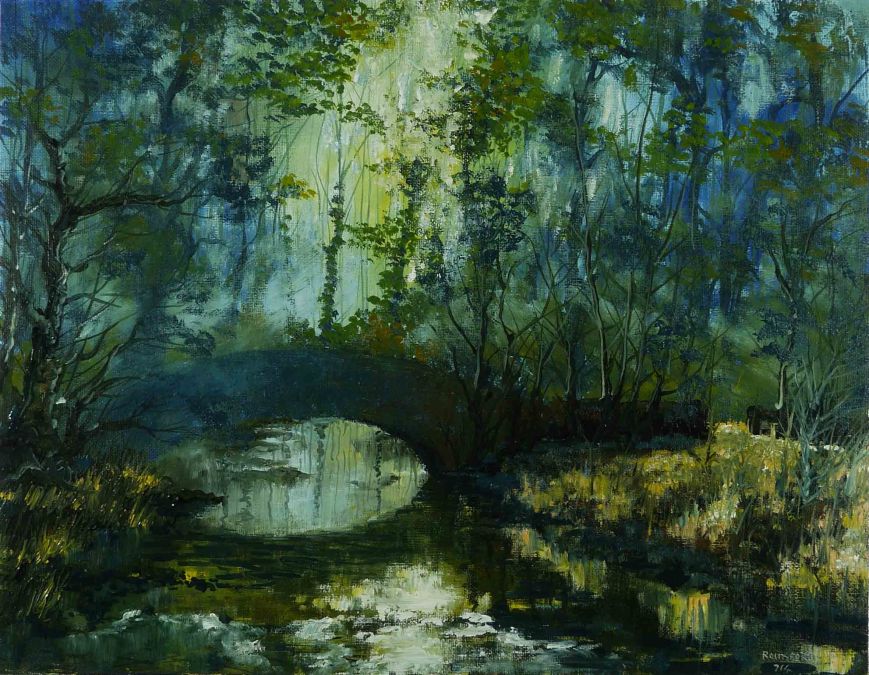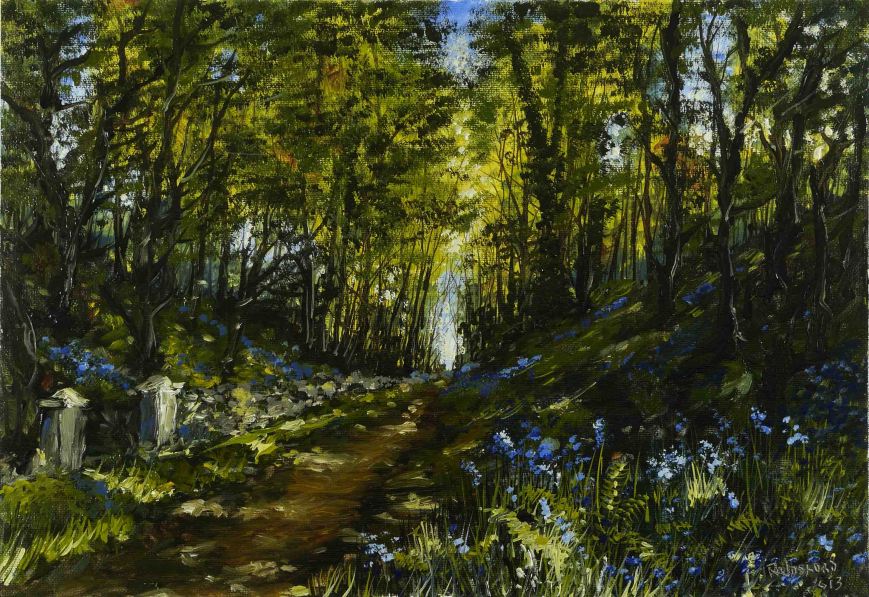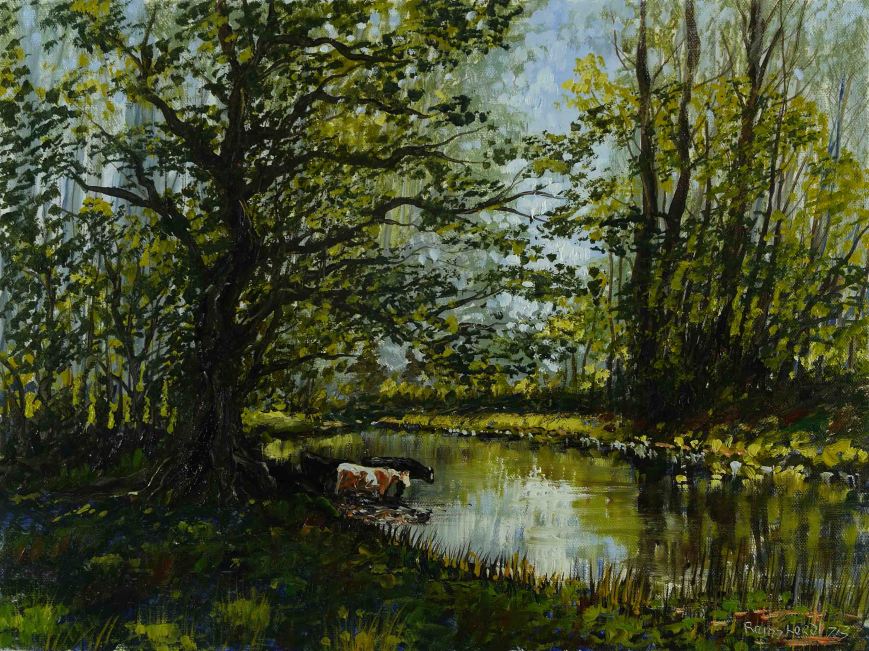This is a busy time of year for me. The garden needed a complete overhaul, mostly to make it safe for visiting grandchildren. Not that there is anything dangerous lurking out there, just a few briars or nettles in the ‘secret’ places where they like to play. We sometimes forget how safe the landscape is in Ireland. There are no snakes, venomous or otherwise, or disease carrying insects like mosquitoes or ticks as on mainland Europe. Very pleasant if you don’t mind the ‘variable’ weather.
This time of year can be challenging for the painter of landscapes regarding the abundance of green. I don’t particularly like green as a dominant colour in a painting. probably because there is so much about at this time of year. Nevertheless, to represent the glory of long summer days, green is essential.
I rarely use a ‘tube’ green these days. Even the mild colours like sap or olive, seem so ‘unnatural’ and dominate the entire painting if spread about in an effort to create a uniform colour. For example if I was using a ‘tube’ green for an area of grassland I would be sure to use the same colour as part of the sky mixes. An example HERE will give you an idea of what I mean by this. This was painted 2 years ago and my method has changed a lot since then but the principal is still the same.
The green in the painting above was achieved by mixing Yellow Ochre and Cerulean Blue. You can see the same colours used in the sky to produce this same green but in the context of the sky it does not look the same. This weak ‘green’ was emphasised by the red, Alizarin Crimson.
Only 3 colours were used – Yellow Ochre, Alizarin Crimson and Cerulean Blue plus black and white. I used a single bristle filbert and a nylon liner. As usual I used only solvent and no medium.
Here’s the video of the painting process, see you soon.









